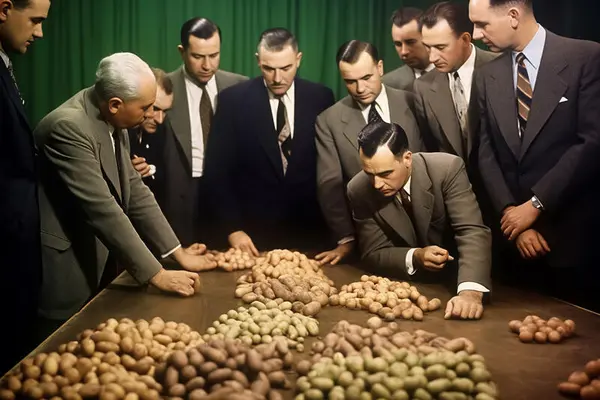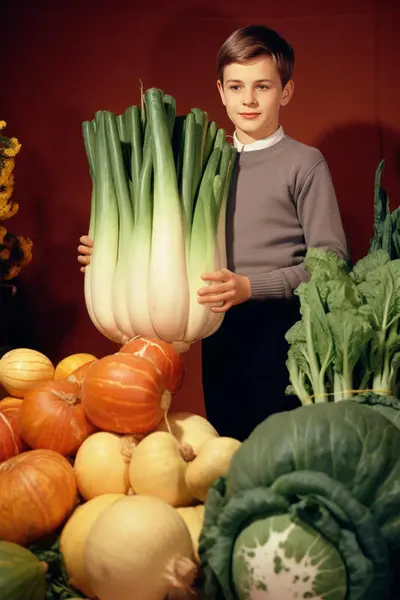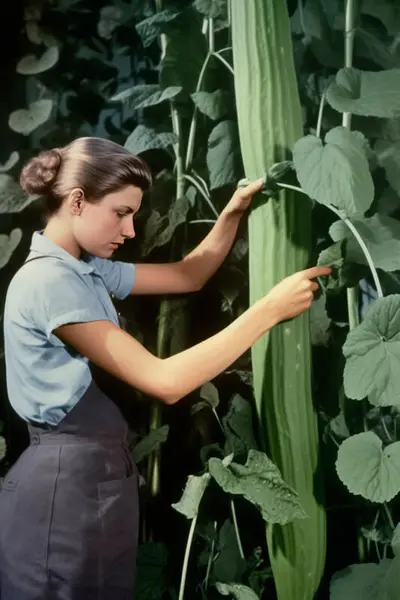- 1/1
© Bruce Eesly, New Farmer, 2023. Selected potato varieties are rated in sixteen categories according to the LURCH Desirable Traits Checklist, 1952
The images on display are part of a pamphlet titled New Farmer, which poses as a historical document and seems to reiterate the success story of the Green Revolution: genetic manipulation results in new crop varieties which result in bigger and better harvests. As the story unfolds however, there are cracks: Can these giant vegetables be real? Did we actually destroy a seed bank to make way for a pesticide factory?
- 1/1
© Bruce Eesly, New Farmer, 2023. Peter Trimmel wins first prize for his UHY fennel at the Kooma Giants Show in Limburg, 1956
The images hover just slightly beyond believability until finally turning absurd.
They are not documentary photographs from the 1960s as the pamphlet suggests, but AI-generated images.
With false imagery and humour, this project questions the dominant narrative of the Green Revolution, asking:
- 1/1
© Bruce Eesly, New Farmer, 2023. Frieda Hammer prunes a cucumber plant, 1956
Read Bruce Eesly's project description here
New Farmer is a reimagining of the history of the Green Revolution of the 1950s, when crop scientists developed new super-productive plant varieties through selective breeding and genetic manipulation, paving the way for industrial agriculture. The images are part of a pamphlet that pretends to have been published by an agribusiness in 1967, celebrating the Green Revolution through 47 documentary photographs.
The pictures aren’t actual photographs however, but AI-generated images or synthographs. The story itself, while bearing some resemblance to actual events, is also made up: This alternative version doesn’t end in the giant fields of monocultures that surround us today, but instead brings about absurdly oversized vegetables.
For thousands of years, seeds have been collected, bred and passed on from farmer to farmer and generation to generation, creating a rich diversity of crops adapted to local conditions. We have lost 75% of this genetic variety in the last century. The Green Revolution has brought about a global food system that depends on a very narrow selection of plants, making it highly vulnerable to diseases, pests and climate extremes.
The remaining super-productive crops rely on heavy inputs of fertiliser, pesticides and water, contributing to soil degradation, pollution and water shortages. We have converted seeds into intellectual property, genetically designed to be used only once. Today, half of the world’s seed supply is in the hands of four companies.
New Farmer is a project about disinformation, the reliability of photographs and the way history is made and perceived through images. It is asking: Whose story can we trust? I’m also hoping the cognitively estranging character of the artificially generated images makes viewers think about our extractive relationship to nature (and potentially commit the revolutionary act of sowing an heirloom seed).


